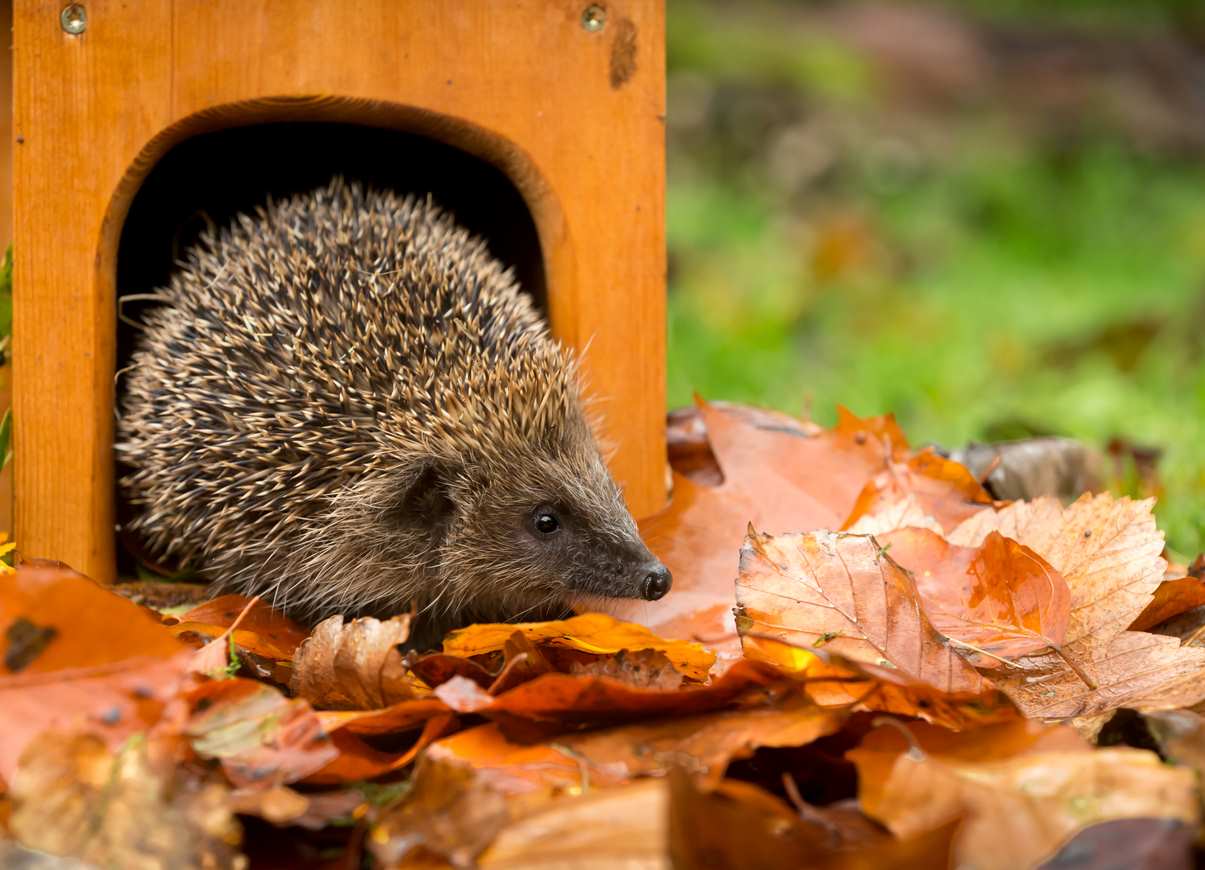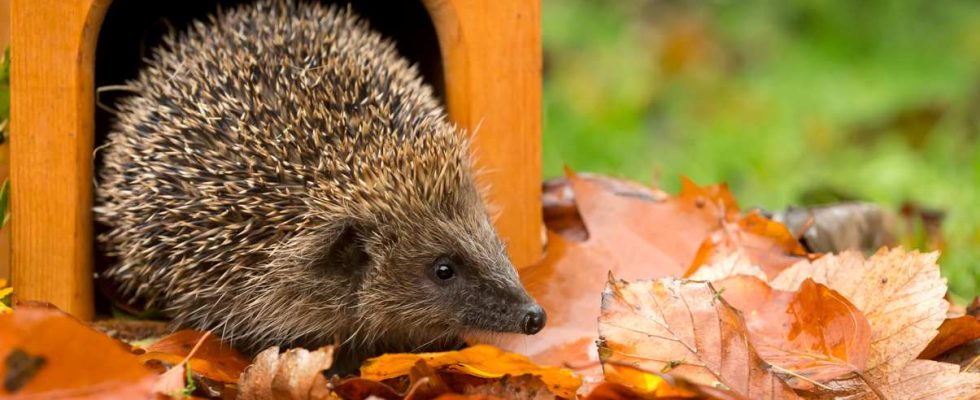
Get to know the hedgehog better
The hedgehog is a small nocturnal mammal measuring approximately 30 cm in length and weighing 400 to 1,800 grams. Here are some points about it:
- Physical description : with its pointed and dark snout, its gray and hairy belly as well as its back covered with white-tipped quills, it is unlike any other. Numbering 5,000 to 7,000, its quills allow it to protect itself from external attacks.
- Way of life : his daily schedule is quickly summarized: he sleeps curled up and hidden under a hedge, a pile of leaves or wood, etc. until nightfall, then sets off in search of food which consists mainly of insects and molluscs, but also small rodents. It can then cover quite large distances, move from one garden to another and, unfortunately, cross roads. As soon as bad weather arrives, this rather discreet and solitary little animal hibernates for 4 to 6 months. They will come out again from March, but will then have lost 30% of their weight. It will then take care of reconstituting itself, then reproducing.
- Predators: Like lawn mowers and other gardening machines, swimming pools, pesticides, fire, cats, dogs, foxes, martens, etc., cars are one of its most dangerous predators .
- Reproduction: after 5 to 6 weeks of gestation, a female gives birth to 4 to 6 young. She breastfeeds them for about 2 months, then they leave the nest to live their lives. Unfortunately, few survive the first winter, especially if it is harsh.
Since 1981 it has been a protected species, among other things, so it is forbidden to kill them or destroy their nests.
Why attract a hedgehog to your garden?
This omnivorous mammal is a real asset to your garden, because it will be able to eliminate all the pests that can develop there and harm your crops. Its particularly developed hearing and sense of smell allow it to feed on insects, slugs, caterpillars, snails, rodents, etc., which can in one way or another damage your plants.
The presence of one or more hedgehogs in your garden will allow you to considerably reduce the damage of these unwanted people and contribute to the biodiversity of your garden, without chemicals harmful to the environment. But to benefit from this effective, economical and ecological solution, your garden must encourage hedgehogs to come and settle there. We give you some tips for this below.
Tips for inviting a hedgehog into your garden
Find out how it is possible to create a garden that makes a hedgehog want to live there. But always keep in mind that you do not have the right to keep a hedgehog in your garden: you can only try to attract it and convince it to stay, while respecting its comings and goings.
An open garden
To have a hedgehog in your garden, it is necessary that it can enter it. So :
- if the fence around your garden is high and buried quite deeply, do not hesitate to create a small tunnel that goes underneath with, for example, a cement pipe with a diameter of at least 30 cm;
- if you have a chain link fence, it is quite capable of digging to get under it, but the problem mainly comes from the mesh of the fence. When they are wide, many hedgehogs get stuck and die. To avoid this problem, opt for a fine mesh fence and provide openings to allow it to pass through;
- finally, if you can do without a fence, opt for a hedge. Hedges provide, in fact, a safe shelter for hedgehogs who like to take refuge and nest there.
A natural garden
For the good health of hedgehogs, it is essential toavoid products that can harm them. This means that you must ban pesticides from your garden, but also anti-slug or anti-snail pellets, beer to scare away slugs, etc.
Likewise, refrain from using herbicides or any phytosanitary product. Indeed, to appreciate your garden, hedgehogs must be able to find food and be able to stay healthy.
A welcoming garden
To be welcoming, your garden should not be too perfect. Indeed, if you create slightly wilder areas resembling its natural habitat, he will feel sufficiently reassured to come and go. You can leave a pile of dead leaves or a pile of twigs which can serve as a shelter for a hedgehog. Likewise, leave areas where the grass is taller to provide shelter and shelter for your little resident.
A hedgehog shelter
It is also possible to create a hedgehog shelter. Simply choose the location carefully, which can be at the heart of a hedge, for example. The important thing is that it is out of sight and not exposed to direct sunlight, because the hedgehog fears it.
If you have no idea how to go about it, know that you can find many tutorials on the Internet in which you will see how to create a hedgehog shelter based on what you have on hand.
If you heat with wood, you can simply create a shelter under your pile of wood by inserting logs to make an opening and allow the hedgehog to make its nest. He will appreciate being able to shelter from the sun, wind, rain and even the cold.
To drink to combat periods of dryness
You can also make available a shallow bowl of cool water. Install it far enough from your home. This water can be useful for hedgehogs, but also for birds and other animals.
It is not necessary to feed a hedgehog since it knows how to feed itself and will always find something to make a feast with the insects from your garden, etc. Likewise, it is important to do not give him dairy or bread which can cause digestive problems.
Secure your space
The hedgehog has been protected since 1981 and it is essential to contribute to its protection. You must therefore make sure there is no risk in your garden. So, if you own a swimming pool, it is necessary to secure it, because although the hedgehog knows how to swim and climb, it will not be able to get out of your swimming pool.
You must also ensure that your pets won’t disturb it. Also pay attention to holes in which it could get stuck, protective nets, tarpaulins, etc.
If you find a hedgehog
Here are the best actions to follow if you find a hedgehog:
- If you find a healthy hedgehog in your garden, you just have to leave him alone and keep him safe.
- However, if you find an injured hedgehog, you can catch it using gardening gloves or a cloth to avoid risking injury. Then after you have secured it, it is important to contact the Wildlife Care Center near you, or a veterinarian. You can possibly reheat it, if this seems necessary to you, but do not feed him or give him watercompetent people will explain the procedure to you.
- In any case, when you see a hedgehog, take a photo or make a video of it, then send it to Operation Hérisson of the France Nature Environnement association.

